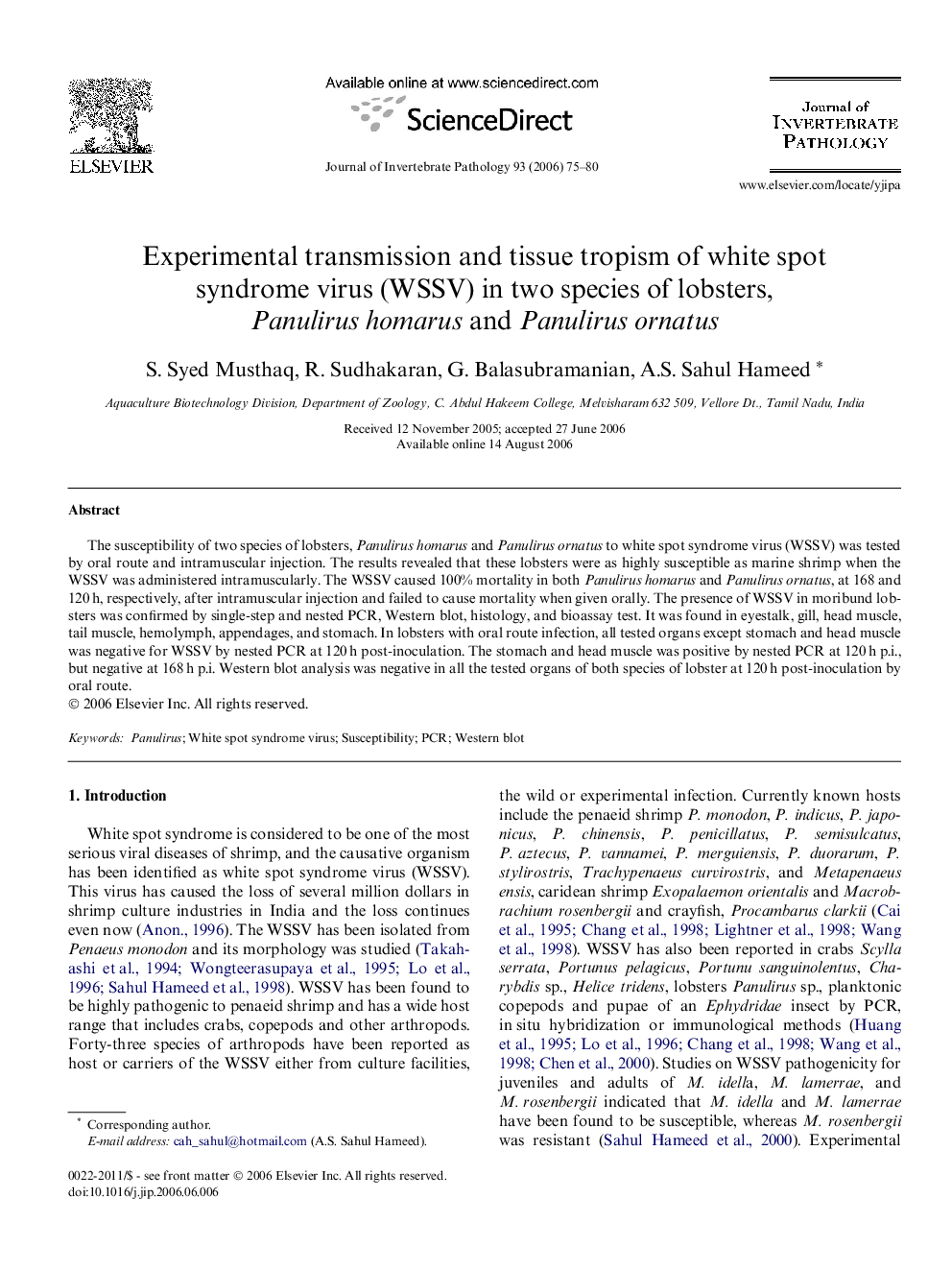| Article ID | Journal | Published Year | Pages | File Type |
|---|---|---|---|---|
| 4558774 | Journal of Invertebrate Pathology | 2006 | 6 Pages |
The susceptibility of two species of lobsters, Panulirus homarus and Panulirus ornatus to white spot syndrome virus (WSSV) was tested by oral route and intramuscular injection. The results revealed that these lobsters were as highly susceptible as marine shrimp when the WSSV was administered intramuscularly. The WSSV caused 100% mortality in both Panulirus homarus and Panulirus ornatus, at 168 and 120 h, respectively, after intramuscular injection and failed to cause mortality when given orally. The presence of WSSV in moribund lobsters was confirmed by single-step and nested PCR, Western blot, histology, and bioassay test. It was found in eyestalk, gill, head muscle, tail muscle, hemolymph, appendages, and stomach. In lobsters with oral route infection, all tested organs except stomach and head muscle was negative for WSSV by nested PCR at 120 h post-inoculation. The stomach and head muscle was positive by nested PCR at 120 h p.i., but negative at 168 h p.i. Western blot analysis was negative in all the tested organs of both species of lobster at 120 h post-inoculation by oral route.
